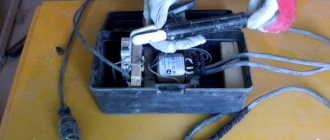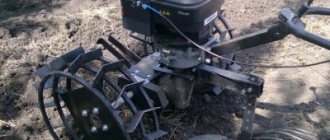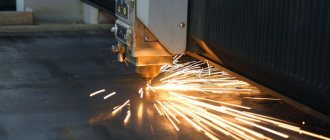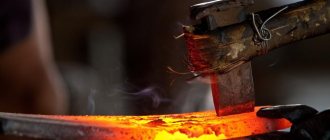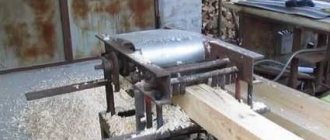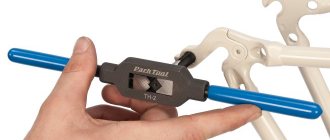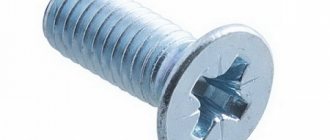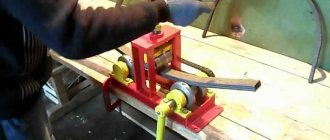When arranging a site or preparing for the dacha season, the need arises for arches made of profile pipes. They are needed when constructing a greenhouse, assembling a gazebo or canopy. It is expensive to buy already bent arches - the price is twice as high as for the same flat rolled products. The solution is to do it yourself, and to make the process easier (it’s very difficult to do by hand) you need to make a pipe bender for the profile pipe. You will need channels or corners, rolling rollers and some other details. Tools include a grinder with a metal disc, a welding machine, and a ruler.
Profile bender design
The machine for bending profile pipes is structurally different from the usual one. This is due, firstly, to the greater resistance of the profile to bending loads, and secondly, to the fact that the bending radius usually required is large. Therefore, the design contains three rollers. Two of them are installed permanently, one remains movable. Using a movable roller, the radius of curvature changes. In general, there are two types of pipe benders for profile pipes: with a middle movable roller and with an outer one (right or left, as desired).
You can make a pipe bender for a profile pipe in different sizes with your own hands
Pipe bender with middle movable roller
The two outermost rollers are fixedly mounted on the body. They are raised above the plane of the base. For the middle roller, a special U-shaped frame is welded. A long, large-diameter clamping screw is installed in the middle of its jumper. A third bead is attached to the lower end of this screw (can be welded). By rotating this screw, the roller lowers and rises, changing the bending radius of the profile pipe.
Design of a pipe bender for a profile pipe with a movable middle roller
A cloud is welded to one of the stationary rollers, with the help of which the pipe is rolled through the machine. To make it possible to apply less effort for rolling, two stationary rollers are connected using a chain. To effectively transmit torque, sprockets are welded to the rollers (possibly from a bicycle), and a chain is selected for them. This simple mechanism makes bending a profile pipe much easier.
With extreme movable roller
In this design, the right or left roller is made movable. It moves along with part of the base. This part is connected to the rest of the frame using powerful metal hinges.
Drawing of a bending machine for profile pipes with a lifting platform
You can change the height using a jack, as shown in the drawing. The height of the platform in this case is selected depending on the height of the jack. The bending radius is changed by lifting the movable part of the table.
Pipe bender for profile pipe with lifting platform
Unlike the previous design, this pipe bender for a profile pipe is driven from the central roller - a handle is welded to it. To reduce the required force, you can also weld the sprocket to two fixed rollers and transmit torque using a chain.
Pipe rolling machine
When rolling long pipes on a machine, the center of movement is shifted. Due to this displacement, a curve is formed between the rollers. One roller presses from the inside of the radial contour, and the other two form the external contour of the future product.
Drawing of a pipe bender for pulling profile pipes. All dimensions of parts required for manufacturing are indicated:
Structurally, such a device is made on a strong support made of channel. The lower rollers are located in bearings. Usually the distance between them does not change (there are versions of the machine where, by changing the location of the lower rollers, a different rolling radius is created).
The top roller is located on top. It can be moved in height. By moving the supporting part downward along the thread, significant forces can be developed. They will act on the pipe during the rolling process.
To perform rolling, additional pulling forces must be applied in the longitudinal direction. A handle is installed for this purpose. By rotating it, you can make the pipe move in one direction or another.
For self-production, you can go a different route. The walls of the device are cut out of a sheet 2...4 mm thick, where the rollers are installed.
Simplified pipe bender design:
The most difficult thing is to make the sidewalls, inside of which are located:
- Support shafts – 2 pcs.
- A pressure roller located on a suitable device.
- A handle that allows you to roll a profile pipe.
Industrial machines are made with manual or electric drive. When manufacturing an electrified machine, the possibility of reverse must be provided. Then you can roll, forcing the length to move in both directions.
What materials and design details are needed?
The base of the pipe bender is made from a channel or two welded angles. The thickness of the shelves is at least 3 mm; select the width of the shelves and the back of the channel to match the existing parts. One rule - the base must be massive and reliable.
Several holes can be made along the edges of the platform. Through them you can fix the machine to some heavy base using large diameter self-tapping screws. Fixation is necessary, since when bending pipes with a thick wall, significant forces have to be applied and it is more convenient to work if the machine is firmly fixed.
This is what the frame looks like with welded racks for attaching the movable roller
A few words about rollers. They must be made of good, high-quality, preferably hardened steel. It is on the rollers and on the axles that hold them that most of the load falls.
It should also be said about the shape of the rollers. They should not be smooth - there should be rollers along the edges that will prevent the pipe from “walking” during rolling. Only under such conditions will the arc from the profile pipe be smooth and not twisted. Ideally, each pipe size needs its own rollers. But then the design becomes more complicated - they need to be made removable, and a reliable method of fastening must be thought out. The second option is to make videos of complex shapes, such as in the photo. Carve several steps for different pipe sizes.
Rollers for bending profile pipes of different widths
In the same photo you can see that the upper part of the bed is not smooth, but toothed. With the help of such teeth, the rollers can be rearranged to different distances and thus also adjust the bending radius.
In general, homemade bending machines for profile pipes are assembled from what is at hand or what they can find/buy inexpensively. Those who have the opportunity grind out the rollers and insert bearings. Those who don’t have such an opportunity use what they have, right down to the bushings from bicycle wheels. In general, you need to understand the design and
What is pipe rolling
For the construction of metal structures, special pipes with a square or rectangular cross-section are used, which have increased strength to static load. Giving these pipes the required shape using a special machine is called rolling. The machine itself is called rollers (roller, pipe bender).
When people talk about pipe rolling on an industrial scale, this term refers to the operation of producing a profile pipe. The blank for obtaining the profile is a round welded pipe, which, by rolling on rollers, is converted into a pipe with a square or rectangular cross-section.
Rolling in production consists of the following operations:
- Preparation of a pipe with a round cross-section from flat rolled metal - the sheet is rolled up and the connecting seam is welded.
- A round pipe is pulled through a roller, deforming it and giving it a cross-section of specified dimensions.
- Carry out quality control of the connecting seam of the resulting profile.
- Additional rolling removes the residual stress of the metal after deformation.
Note! The term “rolling” on an industrial scale has a broader meaning than just a radial change in the shape of the pipe.
A production roller or pipe bender is a machine consisting of 3 or five metal rollers, which are connected into a single mechanism by a drive chain. Such a machine is used in the pipe rolling industry, primarily for the manufacture of the profile itself.
In pipe rolling production or in professional construction, an electric roller is used. This is a device that consists of several specially fixed rollers and a guide system. Between them, with external force, a metal profile is pulled.
When making pipes, the rolling machine looks like a stationary multi-ton machine. In industrial construction, a roller is an industrially manufactured machine for radius deformation of a pipe.
Tricks to make pipe bending easier
To make the rollers move better, bearings are used. But, in principle, for a homemade pipe bender, which will be used only occasionally, you can simply make holders from a corner or channel. Make a hole in them that is slightly larger in size than the axis on which the roller will be mounted. Pass the axle with the roller on through the holes of the holders and somehow fix them (at least weld on a couple of points that will be stoppers). During operation, for better performance, lubricate the rubbing areas with a thick lubricant such as Litol. This is not suitable for industrial and semi-industrial production, but it’s just right for making arcs for a greenhouse or gazebo with your own hands.
Example of turned beads
There is one more trick that helps reduce the required force when bending a profile pipe. You can use the principle of increasing gears as in a bicycle. By the way, you can use bicycle sprockets. In this case, the handle that drives the rollers is welded to a small star. It is installed somewhere on the body. Larger sprockets are welded onto the shaft axis (but teeth with the same pitch). All this is connected by a suitable chain.
With such a torque transmission device, an electric drive is not needed - it will be easy to work
And one more improvement - if you constantly use a pipe bender for a profile pipe, it makes sense to mechanize it. In this case, they install a motor that operates at low speeds.
Main characteristics of a pipe bender
Structurally, a profile pipe bender is a specific machine for rolling profile pipes, which allows bending pipes with various profile cross-sections.
Good pipe benders for profile pipes allow you to solve several problems, including:
- The ability to bend the pipe at the required angle, the value of which can reach 180 degrees;
- Ability to work with pipes in a fairly wide range of diameters - from 5 to 1220 mm;
- Possibility of processing pipes made of different materials (if necessary, you can bend both metal and plastic products).
In principle, there is no need for a pipe bender for processing polymer pipes - such material can be bent in other ways. But when processing metal products you cannot do without professional equipment.
Of course, you can always purchase a ready-made tool or rent it, but these solutions cannot be called the best. Renting specialized equipment is usually expensive, and purchasing it is even more expensive. In addition, you need to understand that buying a pipe bender for a one-time job will not be the most profitable option. To avoid unnecessary costs, many people make pipe bending machines with their own hands.
The procedure for bending a profile pipe on homemade machines
It is unlikely that you will be able to obtain the required bending radius in one go - too much force is required for this. It is impossible to create it manually. Receive the required bend in several passes:
- First, the rollers are aligned so as to obtain a slight bend, the pipe is rolled in one direction, then removed from the rolls, unfolded and inserted on the other side. It is necessary to unfold in order to obtain an evenly curved pipe.
- With the same position of the rollers, it is pulled several times until the curvature is no longer added.
- If the required bending radius is not achieved, change the position of the roller and repeat the steps again.
Rolling pipe bender with electric drive
The change in bending radius is achieved gradually, otherwise you won’t be able to make an arc from a profile pipe on a homemade pipe bender. What to do if you need to repeat the same bend? Make a graduation - note to what height the roller moved, how many times it was rolled in each position. When repeated, the differences, if any, will be insignificant.
The difficulty of bending lies in the fact that there is no scale and it is difficult to obtain the intended bending radius without experience. Sooner or later you will get it, but you can spoil a lot of material in the process.
Homemade hydraulic pipe bender
Hydraulic pipe benders have many advantages over manual devices, but all of them are determined by the complexity of the design. Since hydraulic equipment is complex, it will be much more hassle to assemble it yourself. To assemble such a pipe bender, you will need a solid base, a U-shaped metal piece, a shaft, a pulley, a chain and a hydraulic rod.
Making a homemade hydraulic pipe bender looks like this:
- The first step is to install the shaft on the base;
- A pulley is attached to one end of the shaft, and a chain is attached to the second, after which the next shaft can be installed and connected to the first by a chain;
- In the lower part of the structure you need to cut an opening for the movement of the rod;
- Next, the third roller is installed, which is the main element that bends the pipes;
- The third roller shaft is installed in the grooves of the base.
The result is a hydraulic pipe bender, visually similar to a conventional rolling mill, only more complex.
How to bend a profile pipe without a machine
There are two ways to make an arc from a profile pipe without a profile bender - using welding and a template. Let's start with welding.
Get an arc by welding
The profile pipe is cut with a grinder on one side. They are made every 15-30 cm, depending on the required radius, cross-section and wall thickness. The cuts should not touch one side - the one that will be on the outside.
Result of bending by welding
The spare part prepared in this way is bent, giving the desired bend. For reliability, the edges of the arc can be fixed by welding a rod to them. Then welding is carried out along all the cuts, welding them. And the last stage is grinding the weld spots and treating them with anti-corrosion compounds.
Using a template
Thin-walled profiled pipes can be bent by hand using templates. If you need a special shape, it can be cut out of a piece of thick plywood or chipboard and secured to the table using clamps. On the workbench where we will bend the pipes, make about 8-10 holes. The template is placed near these holes.
The process of obtaining an arc from a profile pipe using a template
The holes are repeated at one end of the pipe; with their help, the pipe is attached to the workbench. Now the free end of the pipe begins to be pulled smoothly, forming a bend that follows the shape. You need to pull smoothly, without jerking.
The template can also be made on the ground. Pipes-pegs are driven into the ground (at least half a meter deep). They form the required arc. For emphasis, two additional stakes are driven in, which are located to the side of the arc. The distance you need to step aside is slightly greater than the width of the pipe.
Pattern on the ground
Having inserted the pipe, it is pulled towards the arc. Great efforts are required, the work is hard. This can only be achieved with a thin-walled, seamless pipe. The suture has too much resistance in the seam area. It is very difficult to overcome it manually.
Industrial rollers
The industry produces machines for self-rolling profile pipes for the needs of private construction. The cost of such devices starts from 25 thousand rubles.
These are portable, compact machines:
- with manual drive;
- electrical devices.
Note! Hydraulic driven machines are used in industrial production. These are heavy stationary machines that have great power.
Standard rollers for home use consist of:
- Three hardened metal rollers. The bottom two are servers. The upper pressure roller presses on the pipe, deforming it.
- Threaded clamping device.
- Stable bed.
- Sturdy metal case.
- Handles for driving the chain drive.
It is easy to equip a manual machine with an electric drive. For some industrial rollers, this modification is provided by the manufacturer. At the consumer's request, the electric drive is installed upon purchase.
However, purchasing an industrial machine for home use is a luxury for most consumers. It is possible to make such a device yourself, provided you have some skills and the availability of component parts.
Making a lever pipe bender
At home, you can make a lever-type pipe bender for rolling professional pipes, which can easily cope with a variety of bending radii of the product.
In this case, you should adhere to the following recommendations of experienced specialists:
- the structure is mainly made of metal, but wood can also be used for this purpose;
- the pressure and central rollers must be made of metal, since they form the basis of the future machine;
- give the holder a U-shape;
- when choosing the size of the machine, take into account the cross-section of the pipes you plan to work with: the larger it is, the more significant the load on the products should be, which means that the machine itself must be large;
- the axis under the central roller must be fixed to the base as securely as possible, but without pinching that prevents the rotation of this holder;
- on the other side of the roller, install a lever of a certain length on the holder: the shorter the lever, the more difficult it will be to perform the operation;
Crossbow pipe bender: step-by-step design instructions
The crossbow bender got its name because it resembles the shape of a hand crossbow. The cost of crossbow devices is about 10 thousand rubles. To save on the purchase of such a unit, it is recommended to make it yourself.
The photo shows two options for crossbow devices for bending pipes. The first option is a factory design, and the second is a homemade machine. The difference between these two machines is significant, since the factory version is made of steel measuring no more than 2 mm, while for the homemade one, metal 3-4 mm thick was used. This means that the homemade unit was made not just to have it, but for everyday use.
Feeling the difference, every master will want to acquire a crossbow pipe bender, making it himself. The disadvantage of this version of the pipe bender is the fact that it allows you to bend the corrugated pipe at only one point. This is due to the fact that the device is equipped with a fixed shoe. This option is used for round pipes when you need to obtain a certain bending radius in one place.
To construct such a device, you need a channel and a hydraulic jack. A special shelf is made for the jack in which it is installed. In the upper working part, two rollers made of steel pipe are mounted between two channels. The distance between the rollers and the heel of the jack must be the same in order to be able to obtain even and neat bends.
Note to the masters
Useful advice from experts is always popular and in demand. Based on the experience of the master, you can avoid various mistakes when carrying out the relevant work:
- In manual devices, it is not at all necessary to resort to installing a chain drive, since the design will function when only one shaft moves.
- To prevent the pipe from sliding off the template used to bend it, you need to use appropriate metal hooks.
- If you need to bend a pipe with a large radius, then three rollers are used.
- When designing a manual machine, care should be taken in advance to be able to adjust the bending radius.
The video shows another option for making a manual pipe bender with two stars. A useful thing that does not require large economic and physical waste.
If you have a pipe bender at your disposal, you can even make money with it. After all, with its help you can not only bend a profile pipe, but also fittings, obtaining the necessary patterns. Curved fittings are used to make decorative elements for entrance gates, canopies, awnings, etc.
Other options for rolling pipe benders
You can make a manual pipe bender using two steel plates, as well as four metal bars measuring at least 4x4 cm. The reliability of the structure will depend on the thickness of the bars. An example of another type of rolling pipe bender is shown in the photo below.
Initially, a frame is made with 3 rollers fixed on it. Two rollers are stationary and are placed on the side posts. A hole is drilled in the upper base (steel plate) and a thread is cut. This thread is needed to adjust the third movable roller. On the reverse side of the installation there is a handle, which can be presented in the form of a wheel. When the wheel rotates, the pipe will automatically roll and bend. The bending radius is adjustable using a threaded connection.
This is not the simplest design, however, with the right approach it will last a long time. If you need to make the product easier, then below is a diagram with all the necessary dimensions.
